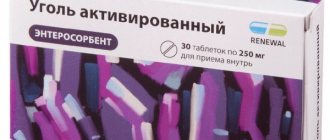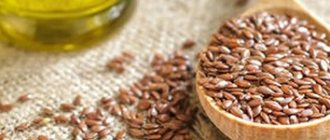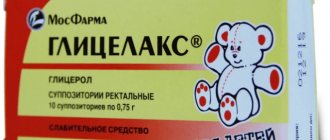Pharmacodynamics
It is used as an antidiarrheal agent due to its ability to sorb. It is also a detoxifier and polyvalent antidote. The high activity of the active substance allows you to quickly adsorb toxins, poisons, barbiturates, heavy metal salts, fragments of narcotic and sedatives, waste products of harmful bacteria, hydrocyanic acid and alkaloids even before they begin to be absorbed into the blood from the gastrointestinal tract.
In addition, charcoal helps remove excess production of metabolic products, including urea, bilirubin and cholesterol. A lower activity of the substance towards malathion, methanol and cyanides was noted. If it enters the gastrointestinal tract, it does not irritate the mucous membrane.
What is activated carbon made from? Is it possible to eat it, harm and benefit?
Of course, not all charcoal you come across is worth swallowing - only activated charcoal, that is, one that has undergone certain processing, can be eaten. For the production of activated carbon, the fossil most often used is coal, which is not for nothing called useful - coal. It contains the remains of ancient plants, which over several hundred million years have changed significantly due to the high pressure of the earth's crust and high temperature.
Coal is mined on an industrial scale and is most often used as fuel. In order to “activate” it, the coal is subjected to pyrolysis (decomposition at high temperatures), then kept at high temperatures with water vapor or carbon dioxide, sometimes using an acid or alkali, as a result of which the coal becomes porous and its surface area increases significantly. The area of one gram of activated carbon can reach 1500 square meters!
Charcoal is even added to toothpaste: it whitens enamel
Activated carbon has an adsorption effect - it is important not to confuse it with an absorbent one: carbon particles do not absorb other substances, like a sponge, but attract and hold carbon molecules, for example, some poison, due to weak attraction between uncharged molecules. The main advantage of activated carbon is that it is not digested in the human gastrointestinal tract and is not absorbed, but “removes” associated toxic and irritating substances from the body.
If you “catch” an intestinal infection or are poisoned by food, doctors advise taking 50 to 100 grams of activated charcoal (5 to 10 packs) at once within one hour after the first symptoms. 2-3 tablets will not help at all.
Black cappuccino is prepared using activated carbon
Since activated carbon is allowed to be consumed as food, it is often used as a dietary supplement to various drinks and dishes. It is believed that a small amount of it will not harm, but will only be beneficial. They add it to coffee for a wow effect - a black and white cappuccino or latte really looks impressive.
Charcoal mineral water with chia seeds is a real superdrink
Cold detox drinks based on activated carbon are also popular - just dissolve a few tablets in sparkling mineral water and pour in chia seeds. You can take this coal mineral water with you, for example, to a sports club. Coal is often added to ice cream, believing that such a dessert will not harm, because along with coal, “everything extra” will also benefit.
Coal is also added to baked goods - black burgers with black buns, black bread, black crackers and even black croissants are in fashion. It’s just important to explain that the bread is not burnt, but quite healthy.
Coal-colored baked goods - no longer ashamed
It is important to remember one thing, like any substance, activated carbon also has contraindications. For example, gastric and duodenal ulcers, ulcerative colitis and other gastrointestinal diseases, as well as individual intolerance.
Long-term use of activated carbon can disrupt the normal functioning of the stomach and lead to problems with the absorption of vitamins, microelements, fats, proteins and other beneficial substances.
Indications
Activated carbon is prescribed for:
- beginning symptoms of intoxication of unknown origin, like a sorbent;
- food poisoning;
- when symptoms characteristic of salmonellosis and dysentery appear;
- drug poisoning (uncontrolled use);
- drug use;
- alcohol intoxication, as a sobering agent;
- hangover syndrome, as a sorbent;
- allergic reactions of food and medicinal origin;
- chronic flatulence;
- preparatory activities for ultrasound examinations of the abdominal cavity;
- diagnosed renal failure;
- jaundice.
Activated carbon cannot be taken as a single drug. It always acts as an addition to prescribed therapy, accelerating the removal of poisons and helping the functioning of the filtering organs.
Raw materials for making coal
Activated carbon can be prepared from various raw materials: wood, nut shells, animal bones (purchased from slaughterhouses), coal, and oil products.
Charcoal
Coal, which is suitable for further transformation into activated coal, is obtained from trees with dense and non-resinous wood - group A. These are birch, ash, beech (belongs to valuable tree species, not used for producing coal), elm, maple, oak. The use of wood from fruit trees and shrubs is allowed.
The wood is cleared of bark, core, and areas of rot that reduce the density and porosity of the final product. Reduce the yield of the future absorber by increasing the amount of ash.
coconut shell
Whole coconut
Coconut palms are tropical flora. Palm fruits are called nuts because of their hard shell. After extracting the nutritious pulp (juice), the shells are used by local residents to make primitive utensils and in the construction of dwellings.
Excess shells are sold to rope and coal manufacturers. Coconut shells are very dense, so the charcoal is extremely porous. It is considered the best of activated carbons.
Contraindications
Patients with:
- diagnosed ulcerative colitis and other ulcerative lesions of the gastrointestinal tract;
- bleeding of the abdominal organs;
- intestinal obstruction;
- intestinal atony.
In addition, patients undergoing treatment with other antitoxic drugs, the effect of which is possible after absorption of the active substance into the blood, should not take activated carbon. This is explained by the fact that charcoal blocks the absorption of drugs, interfering with treatment.
How to take activated carbon
Before you start taking this drug, it is important to know that it removes not only harmful substances from the body, but also useful ones. Therefore, if there is a violation of the intestinal microflora or any viral or infectious diseases, then taking charcoal is not recommended. After all, the drug will also destroy beneficial bacteria that fight harmful ones.
It is important to drink activated charcoal with plenty of water so that the drug is distributed throughout the intestines. The water should be at room temperature.
It should be borne in mind that during long-term and constant use of this drug, vitamins are washed out of the body. Therefore, it is necessary to take multivitamin complexes at the same time.
There is a risk of dysbacteriosis during long-term use of coal. Therefore, it is necessary to take prebiotic agents at the same time.
Directions for use and dosage
The tablets are taken orally with clean drinking water one hour before the intended meal or two hours after the meal. If the patient is forced to take other medications, then charcoal consumption is permissible 1.5-2 hours after taking another drug.
The dosage is calculated based on the patient’s weight, degree of intoxication and age:
- a single dose for adults is 8 tablets (2 g) - for mild symptoms of poisoning, 12 pcs. (3 g) tablets for obvious symptoms of food poisoning.
- a single dose for children is calculated taking into account weight: 1 g of coal per 1 kg of weight - for severe symptoms of increased gas formation or food allergies.
Both adults and children should take charcoal three times a day.
The duration of the course, as a rule, depends on the patient’s symptoms. Usually it does not exceed 3-4 days. For long-term and acute allergic reactions, treatment can last up to 14 days.
Manufacturing methods
In industrial production, the drug is obtained by chemical and physical methods. At home, it is realistic to use only the physical method.
Physical method
The physical method includes three stages:
- Obtaining a coal substrate with a low oxygen supply (imitation of industrial pyrolysis).
- Activation of charcoal with water steam.
- Drying.
They take finely chopped wood raw materials (chips of 2–3 cm), without bark, core and without areas of rot.
Wood raw materials are slowly burned. They use a tin can (for example, a coffee can), a cast pan, a frying pan, a fire or a pit.
Operating principle: the container must be closed from above to limit the access of oxygen to the burned raw material. A layer of sand is poured onto the pit or fire. In the tin can, holes are made only at the bottom (to allow flammable gases to escape).
Trees of various species
Coal fuel (for example, for barbecue) is obtained from any trees and shrubs. Firewood with remaining bark, areas of rot, and shavings will be used.
If the goal is to create activated carbon, only hard wood is used as a raw material. The second condition is the absence of resins (in large quantities). Suitable options are beech or oak, but valuable trees are not usually used for charring. The traditional raw material for activated carbon is birch.
Side effect
A side effect observed in all patients without exception is discoloration of the stool in black. Dark plaque on teeth and fillings is possible if the patient chews the tablet before swallowing it. This may also cause the saliva to have black spots.
If the recommended doses are exceeded, activated carbon can cause constipation, because as a result of its excessive intake, hard and dense feces are formed that are difficult to move through the intestines.
If taking the sorbent causes any other negative reaction, you should immediately inform your doctor.
Some tips for using charcoal in children
Activated carbon is sold in every pharmacy, and therefore becomes one of the most affordable drugs, its action is very similar to Enterosgel, Phosphalugel. But the price is only several times cheaper. There are some tips for those parents who decide to start using charcoal instead of expensive drugs:
- Before you start giving charcoal, you need to consult a doctor so that he can help you accurately calculate the dosage and tell you whether charcoal will help in a particular case or not.
- The drug should be given an hour or two before meals or after, because charcoal can absorb beneficial nutrients
- The course of treatment should not last more than three days. Only a specialist can increase the treatment period
- Charcoal binds well and colors the chair almost black. Therefore, while taking charcoal, it is better to give your child more water to avoid dehydration.
Previously, activated carbon was only sold in tablet form. Today it can also be found in the form of granules, powder and even gel. Each parent must choose the most optimal form of release so that the child definitely does not refuse to take it. Everyone knows that coal doesn’t have a very pleasant taste, and it’s also black. Therefore, children are recommended to mix with water. Giving activated carbon to children is possible, and sometimes even necessary, especially when it comes to poisoning or intoxication.
Main causes of diarrhea
The cause of diarrhea may be dysbacteriosis.
Most often, diarrhea occurs due to food poisoning. Other common reasons include the following:
- allergy;
- dysbacteriosis;
- avitaminosis.
Diarrhea is often caused by serious chronic diseases. In this case, complex therapy and compliance with all doctor’s recommendations are required. Taking activated carbon is recommended if the cause of indigestion is known.
Particular care must be taken if diarrhea begins in an infant. Young children quickly lose their vital supply of fluid. This leads to dehydration.
Children can be given activated carbon; this natural remedy is usually well tolerated and does not cause unpleasant consequences. Timely release of toxins allows you to quickly cope with diarrhea and normalize stool.
Other sorbent options
White charcoal can relieve intestinal gas.
In addition to activated charcoal, there are other types of medications that remove toxins from the body. Among them is white coal.
It is made from silicon dioxide and highly dispersed microcrystalline cellulose. There are also auxiliary substances in the composition, such as potato starch and powdered sugar.
Silicon dioxide is effective in cleansing the body. It is able to remove toxins caused by the activity of microbes or chemicals.
It eliminates allergen substances to which the body reacts acutely. White coal can relieve intestinal gases, products of protein breakdown.
Benefits of white coal
White charcoal tablets have no taste.
Experts often recommend taking white coal, based on its following benefits:
- greater efficiency (4 g per day is enough);
- provides additional stimulation of intestinal function, as a result there is no need to worry about subsequent constipation;
- the tablets have no taste;
- you can swallow the tablets whole;
- removes excess gases from the intestines, prevents increased gas formation;
- helps normalize the functioning of the digestive system, facilitates the absorption of nutrients;
- reduces the potential for the formation of gallstones.
Algorithm of actions
To obtain a high-quality product, the technological cycle is carefully followed.
Dry distillation of raw materials
Wood raw materials are burned on a gas stove. A fire is used outdoors, and a stove is used in a village house. In a city apartment, a blowtorch will help.
If you can start a fire, the tin can method will do. Dry crushed wood is placed in a tin can, low and wide. Drill several (10–15) holes in the bottom of the jar through which flammable gases and smoke will escape.
The gases will burn in an open flame - the risk of accidental carbon monoxide poisoning is negligible. The top of the tin has no holes. Air does not enter the jar, and the raw materials are charred evenly. When the chips have burned out completely, turn off the heat under the tin and let it cool.
Carbon activation
Hot kettle
The next stage is the activation of the resulting product, or opening of the pores. At home, either steam or immersion in boiling water is used for activation. The latter method washes away the carbon soot - the absorption capacity of the future product is reduced.
More often they use water steam - they hold a coal substrate over it. Take a tall pan, fill it halfway and wait for the water to boil. The semi-finished product is wrapped in gauze and suspended in a pan above the water level - in a cloud of steam. The lid is closed. The steam will expand and unclog the pores of the product.
Drying and storage
The future absorber is wet after activation and needs to be dried. Dry the coal in any available way: in the air, in the oven, in the sun. You can place the already activated gauze product back into tins with holes at the bottom and dry them over a flame. After drying, the drug is ready for use.
If the adsorbent is not used immediately, it is sent for storage. You will need glass jars with tightly sealed lids. Avoid access of air inside, otherwise air pollutants will be absorbed by the porous surface of the coal, and its cleaning power will decrease. The crushed absorbent is poured into the jars and placed in a dark place, as cool as possible: underground, refrigerator. The product lies quietly for several years and does not lose its beneficial properties.
If storage conditions are violated or not created, the drug will lose its absorbency after a few weeks.










